Birds and Berries
By Chris Carmichael
This is the time of year when images of birds feeding on red berries abound: Think of all those holiday cards featuring a chickadee on a snow-dusted holly bush.
As Bay Area residents, we don’t have snow-dusted bushes, but many of our local birds do rely on berries. For some, like Cedar Waxwings, berries form the basis of much of their diet year-round, supplemented with insects, particularly during the breeding season. The Phainopepla relies primarily on mistletoe berries to survive in the arid habitats where it occurs. Many birds that feed mainly on insects or seeds opportunistically supplement their diet with berries, often during the cold months of the year.
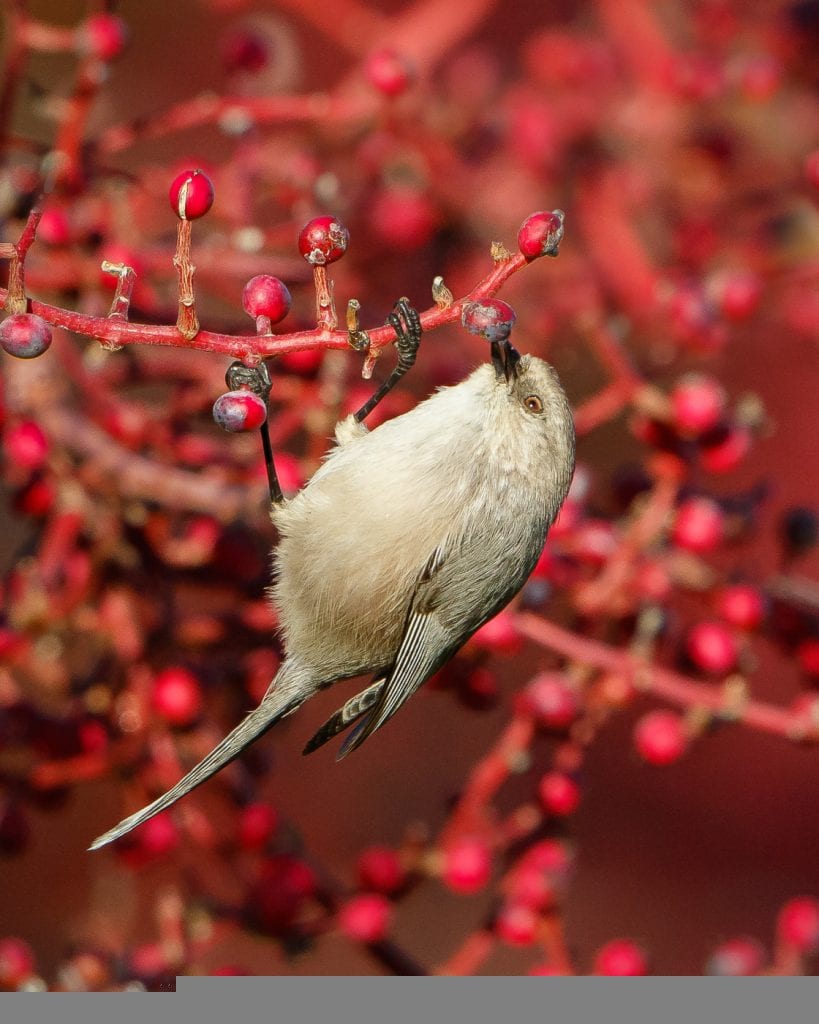
Here in the Bay Area, several native berry-producing plants come to mind when we consider landscaping to support bird life. The toyon (Heteromeles arbutifolia), in the rose family, creates the classic winter holiday image when decked with birds feeding on its berries. At the U.C. Botanical Garden at Berkeley where I worked for many years, I’ve watched American Robins and Cedar Waxwings strip toyons bare in no time, savoring the red-orange fruit. (Check out the video of waxwings feeding at the bottom of this post.) Northern Mockingbirds seem to favor toyon as well.


Several other native berry-producing plants readily draw birds to their bounty of fruit, including blue elderberry (Sambucus nigra ssp. caerulea), various currants (Ribes spp), coffeeberry (Frangula spp.), poison oak (Toxicodendron diversilobum), Oregon grape (Berberis spp) , dogwoods (Cornus spp.), and brambles (Rubus spp), to name a few.
Fruiting Pacific crabapples (Malus fusca) naturally occur north of the Bay Area, but locally at the Botanical Garden, they’re magnets for Purple Finches, if the Robins leave them anything to eat! And during this year’s Christmas Bird Count, it was a pleasure watching a pair of Wrentits feeding on the native redberry (Rhamnus crocea) fruit in the Garden.
Birds are also drawn to non-native berry-producing species in our landscapes, with two rose family relatives—firethorn (Pyracantha spp.) and cotoneaster (Cotoneaster spp.)—being prime examples.
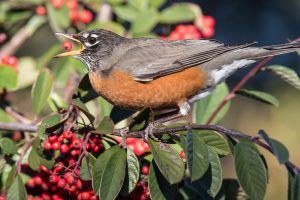
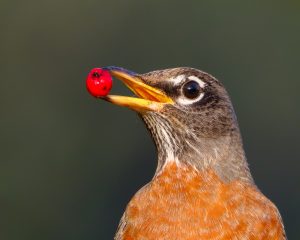
When our native birds feed on these and other non-natives, they can disperse the seeds leading to an invasive plant situation. Other examples of readily dispersed and problematic invasive species are glossy privet (Ligustrum lucidum), Chinese pistache (Pistacea chinensis), and the European holly (Ilex aquifolium).

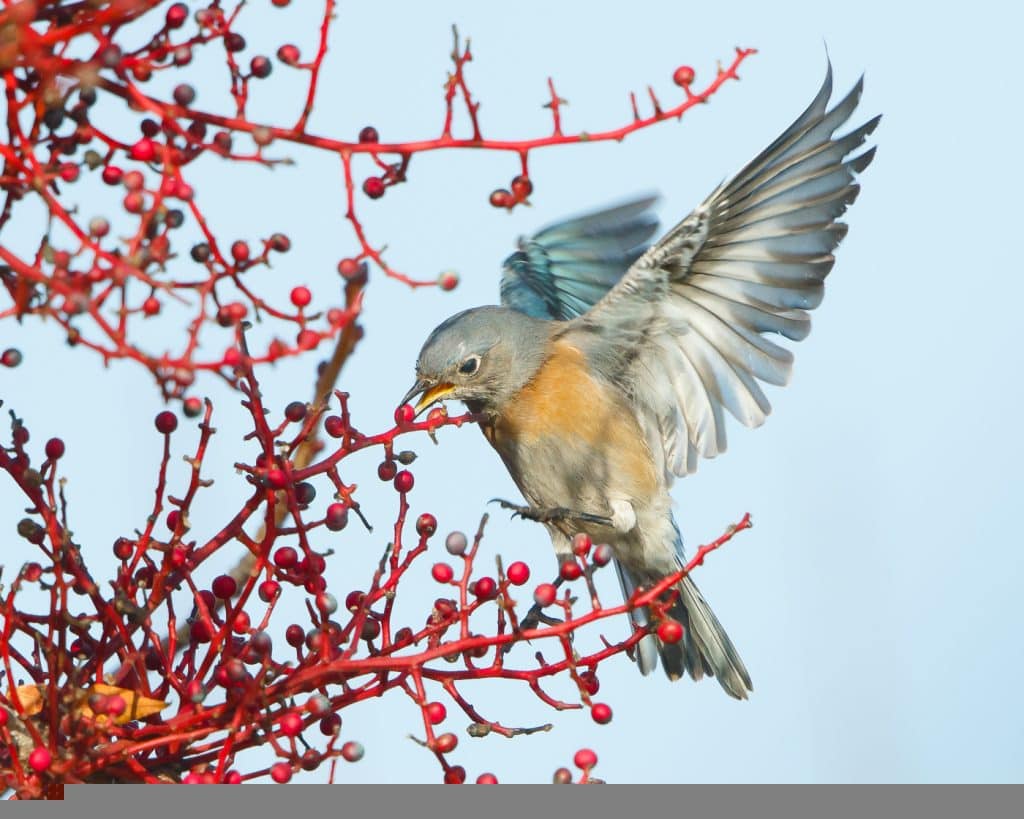
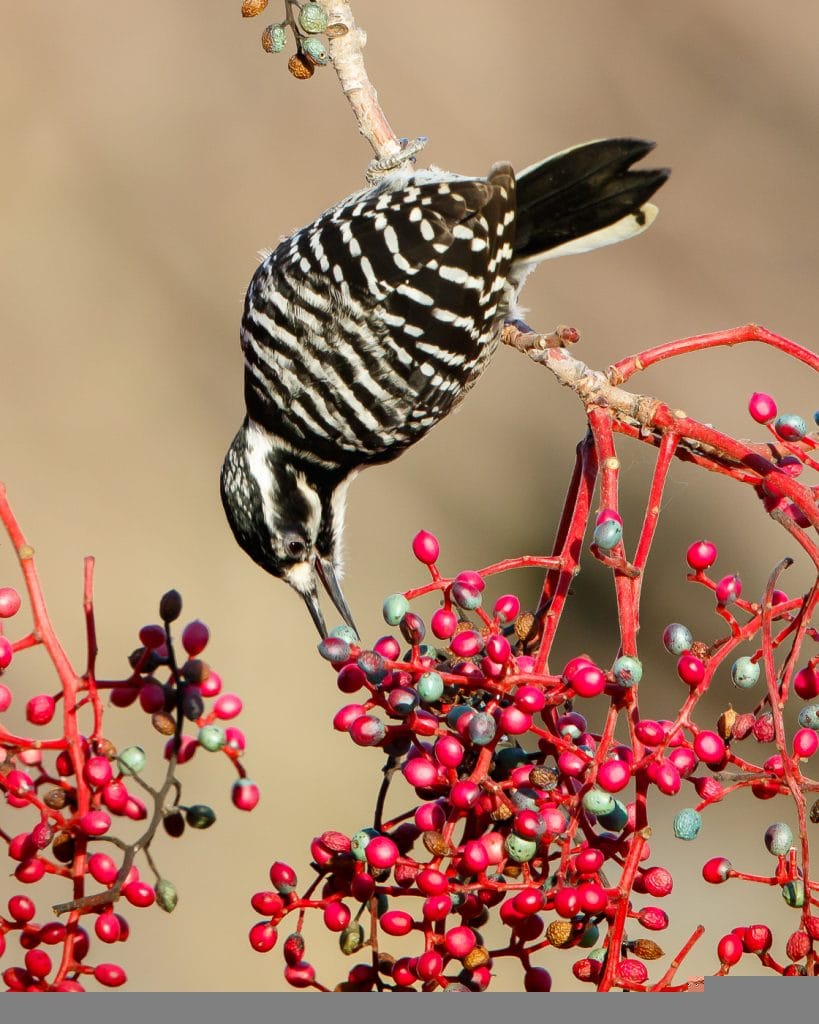
Some non-natives, while attractive to birds, are less likely to become invasive, often because they require more moisture to survive unaided in our California habitat. Flowering crabapples (Malus spp.), are a prime example. A crabapple tree by the Japanese Pool at the Botanical Garden typically attracts droves of robins and waxwings, joined by wintering Hermit and Varied Thrushes, along with some wintering sparrows.
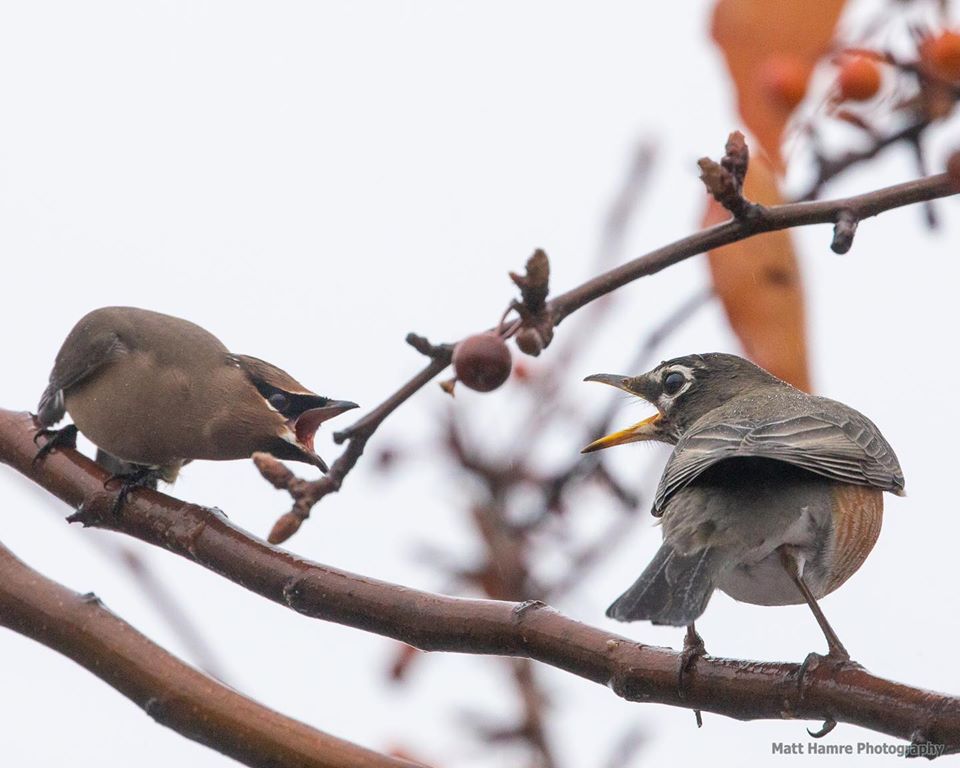
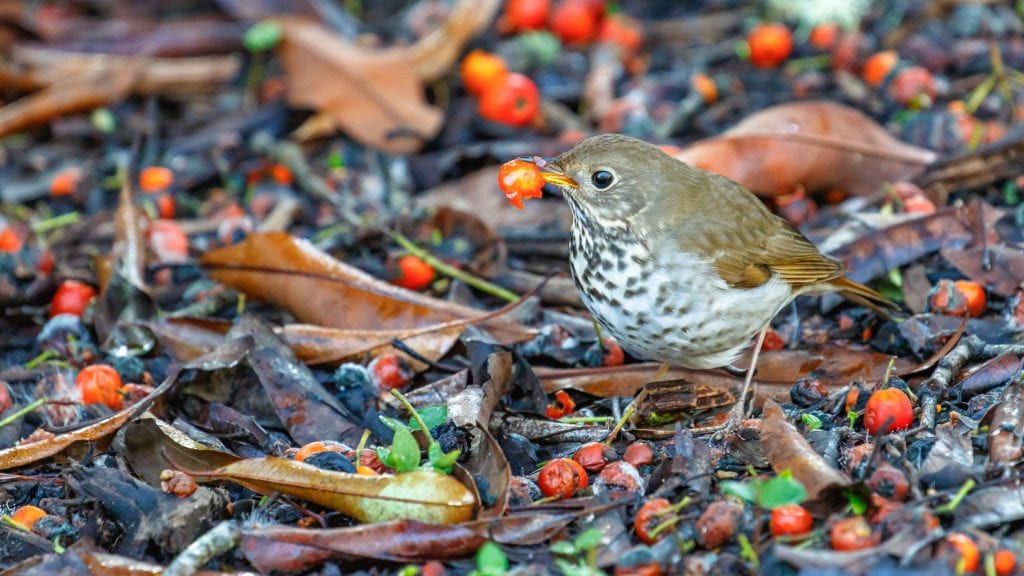
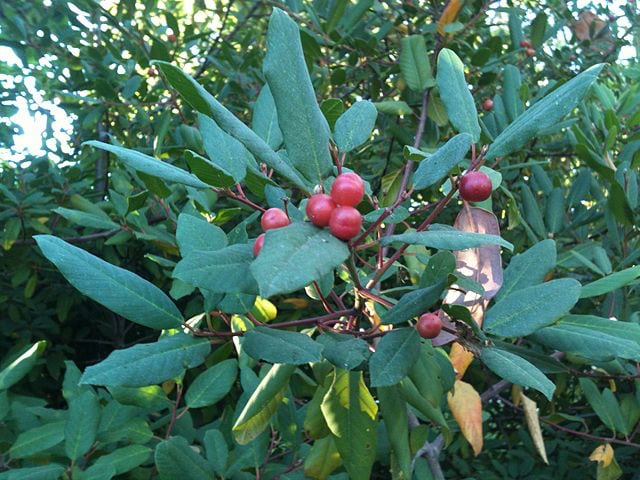
The issue of using native plants verses introduced species to attract birds is always an important one. A consensus is developing that native plants provide more high-quality habitat and food for birds in our urban settings than non-native species. Not only have local birds evolved in tandem with the fruits and seeds of native plants, but native plants also attract insect species that birds have evolved to eat.
Watching birds gorge on berries often raises the question of whether they become drunk from over-ripe, fermenting berries. On the Internet, it’s presented as a given that aging fruit leads to drunken birds that fly into windows and stagger when walking. But the science behind this assertion appears limited, and skeptical observers would like more evidence to support the claim of avian drunkenness.
Drunk or sober, our birds rely upon native berries for nourishment. They’re more than an iconic winter image — they’re a key part of our increasingly fragmented ecosystem that we need to preserve and nurture. You can help by landscaping with native species like toyon and coffee berry that will support California avifauna.
Want to learn more? The California Native Plant Society has information on native plants with berries that nourish birds.
A native of Massachusetts, Chris Carmichael is a lifelong birder who has lived in Oakland for the last 22 years. He recently retired as the Associate Director of the University of California Botanical Garden, though he goes back often as it’s his favorite birding patch.
Video of Cedar Waxwings by Melani King
